2019 Bridges Conference Fashion Show
Cath Thomas
Designers
Biography
I am a Dutch citizen living in Switzerland since age 10 (I am 50). I have done some beading in my childhood, but really got passionate about beadweaving in 2004. From my perspective, beads are like pixels or tiny bricks, which, woven together, create pictures, organic textures, or glass ribbons or sheets. I see the flat beaded fabric as a construction material like soft metal: it has limits I love to experiment with, by folding it, rolling it up, zipping it, and make it curve even if it doesn't want to curve at first sight. When I bead, my left and right brains really become one, which is very satisfying (probably like origami can be very satisfying). Beading requires so much counting and planning, that it is nearly impossible to bead without having learned the bare basics. Fact is, the art of beading often reveals that mathematics are helpful, if not a necessity at a certain point in the creation process. I like to use multiples of numbers, in particular 11, like an invisible, playful signature in my beadwork, because it's the fool's number, but also as a wink to the binary code used in computers. It is present in many of my pieces, but "Connectedness", a silver medallist in the Fire Mountain Gems and Beads 2009 beading contest illustrates this the best. My favorite stitch is 3D peyote stitch, because of its architectural properties and I push it boundaries since many years. I made the first beaded Kaleidocycle before the Contemporary Geometric Beadwork (CGB) Team was created and who found a more ‘reproducible’ method to make one. I have also made the first multi-wing bangle bracelet using all increases (bead slang here), which I called Jalisco bangle. Thanks to Kate McKinnon's remarkable work on nomenclature in her CGB books, it got its family name, "multi-wing". It is now a classic component in 3D beadweaving. I also made the first beaded warped hexagon bracelet which somebody baptised "ConCathCuff". I later transformed the warped hexagons into bezels for crystal stones, which together form a leaf shape in the negative space, for an Art deco inspired necklace, "The Leaf". This piece represents exactly what I love about beading: the nerdy steps to develop the basic shapes by finding the right proportions and the best fold, and then it becomes marvellously poetic to give these shapes their place in a finished piece which transcends the technique. Unfortunately this piece is in the UK for an Art Deco exhibit organized by the Beadworkers Guild. I am a member of both the Beadworkers Guild and the CGB team. A woven fabric with beads all assembled like a wall of tiny bricks can hold its shape but still can form other shapes. This is my favorite play in beading. It led me to study 2-, 4-, 6- ,8- ,10-, 12-, 28-pointed zig zags (or rick rack, as the CGB team calls it now) using a technique called 3D Cellini peyote. In this technique, the progressive increase (or decrease) in size of the beads will create a curve, and the number of points will form the number of planes once the 2D sheet is folded into a 3D shape. Depending on the size and the number of beads used, this curve will differ from one piece to another. The slightest difference will affect the shape. I wrote a paper about this study, and how an odd or even number of beads used in the start of these 3D shapes will create a different direction of the swirl in the beadwork. "Chirimania" is a necklace that is very representative of this study, composed of all 4-pointed Cellini beaded beads but all have a different shape because of a different number of beads in the start. I am not a mathematician, but nevertheless would be absolutely lost without mathematics to create my designs.
Looks
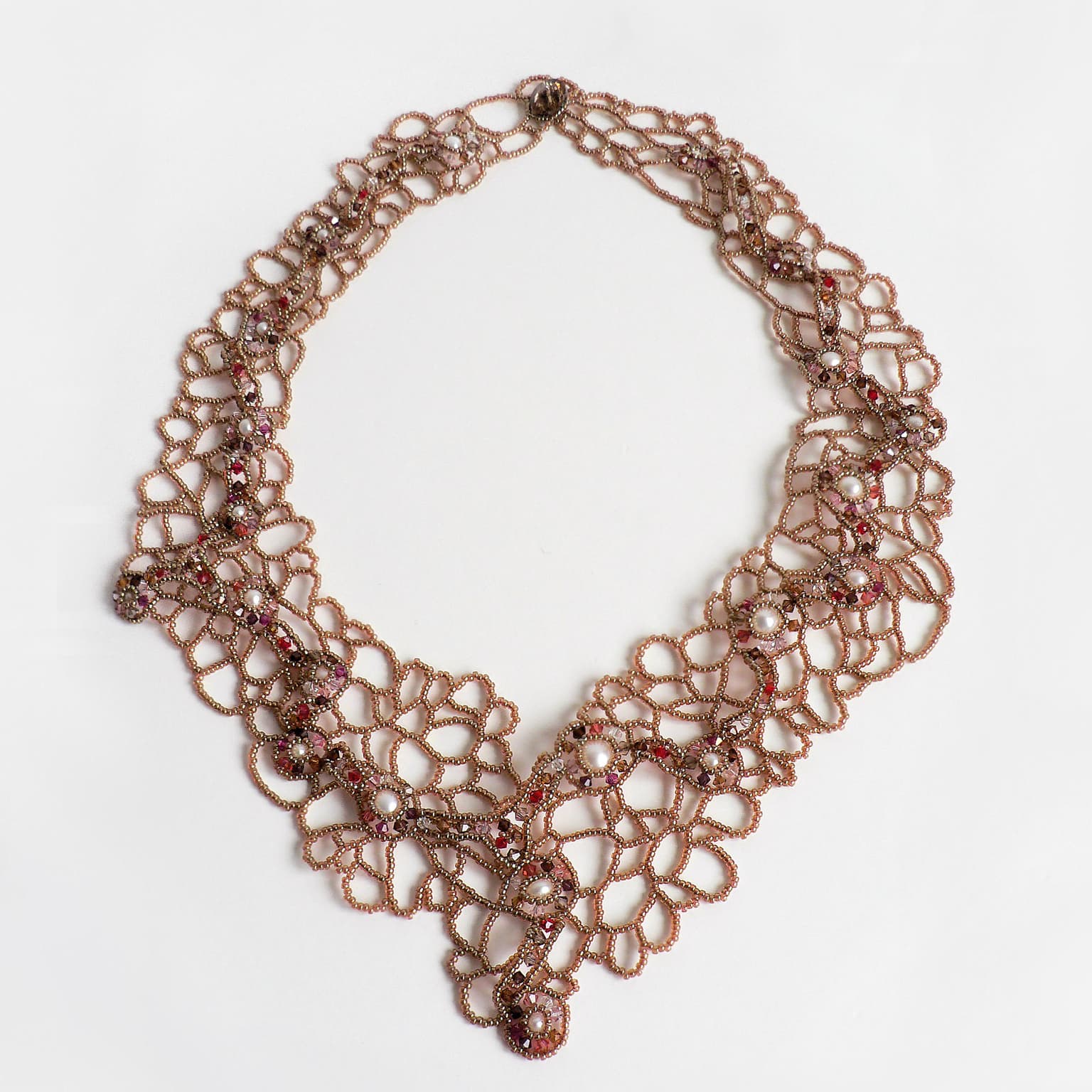
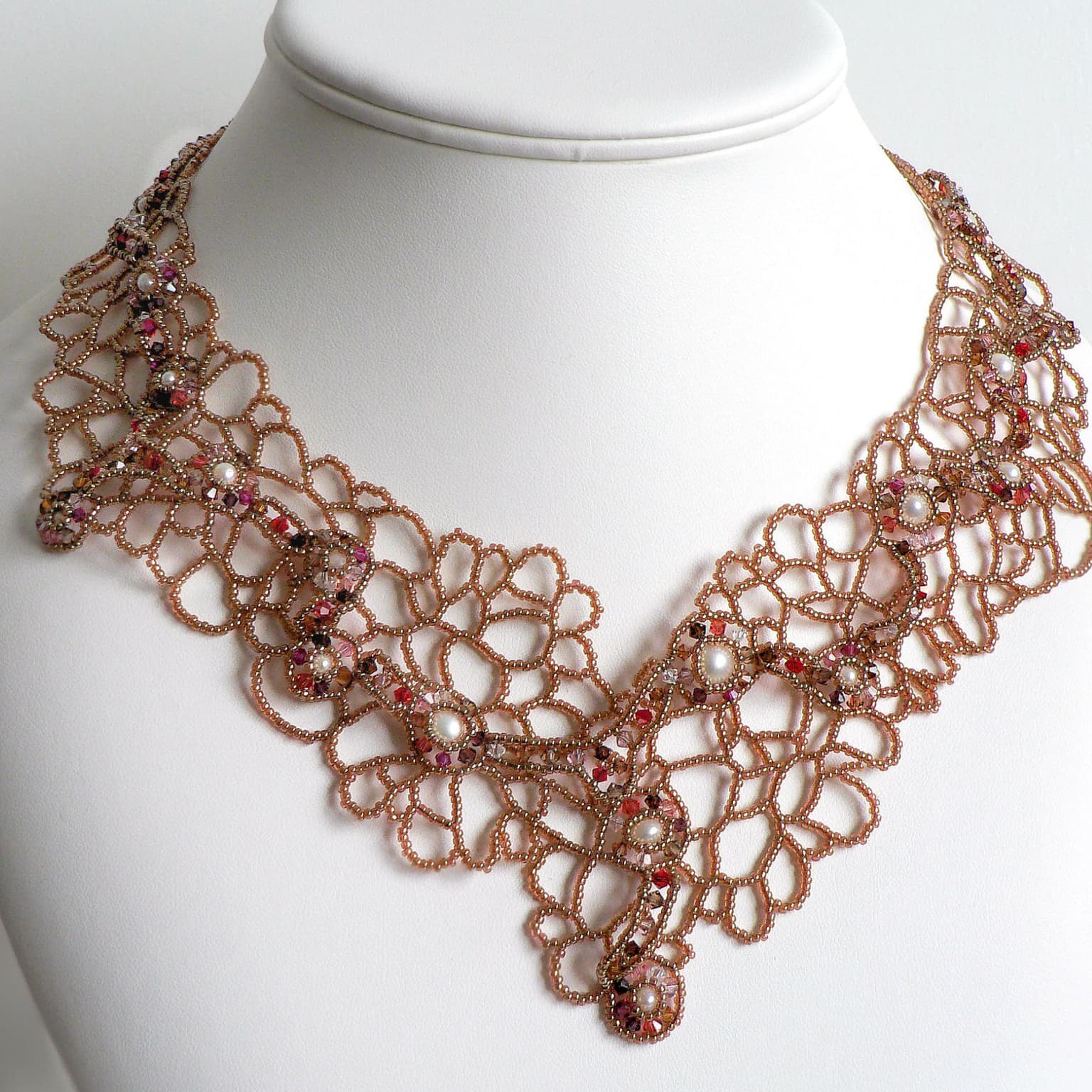
About the look
Connectedness
Beads
2009
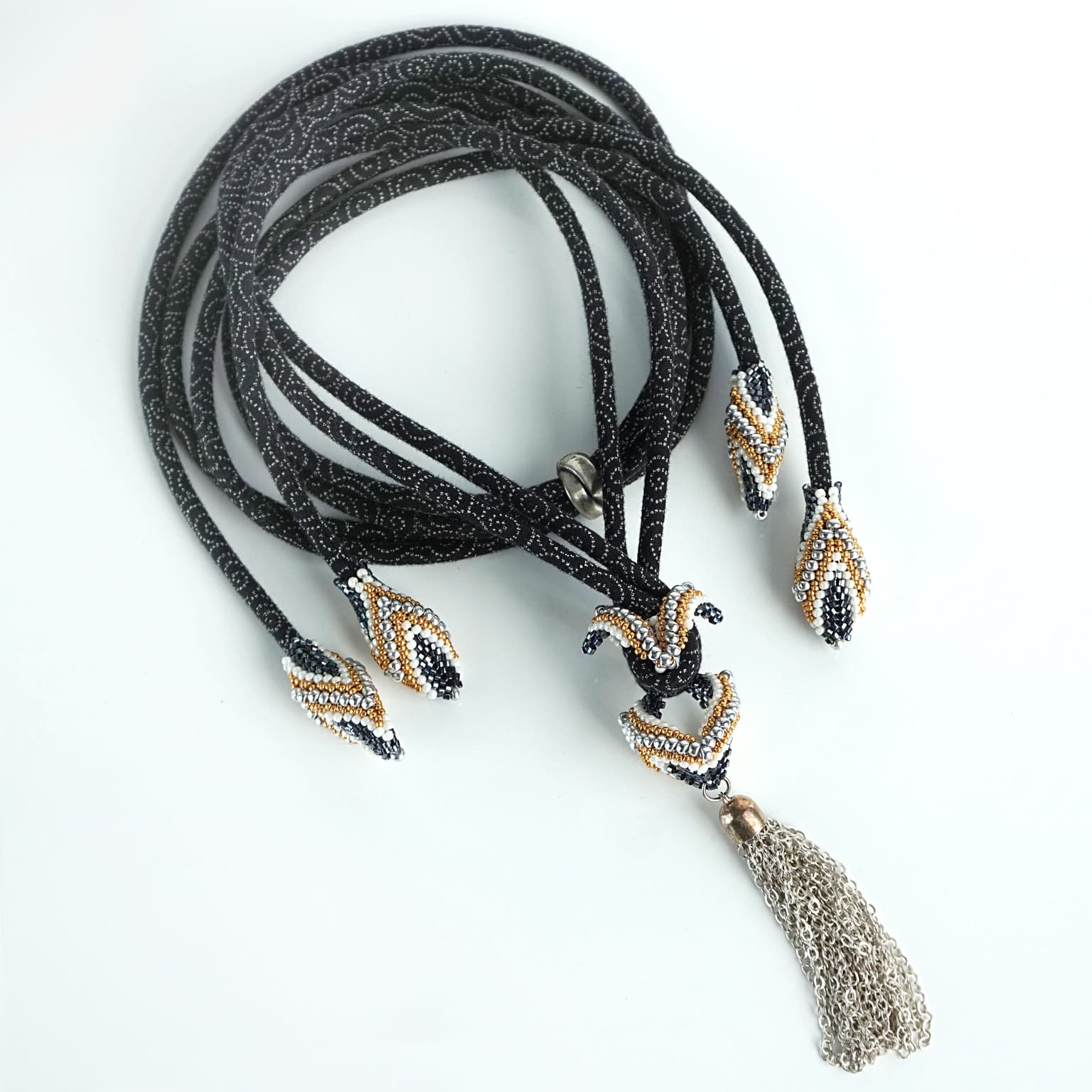

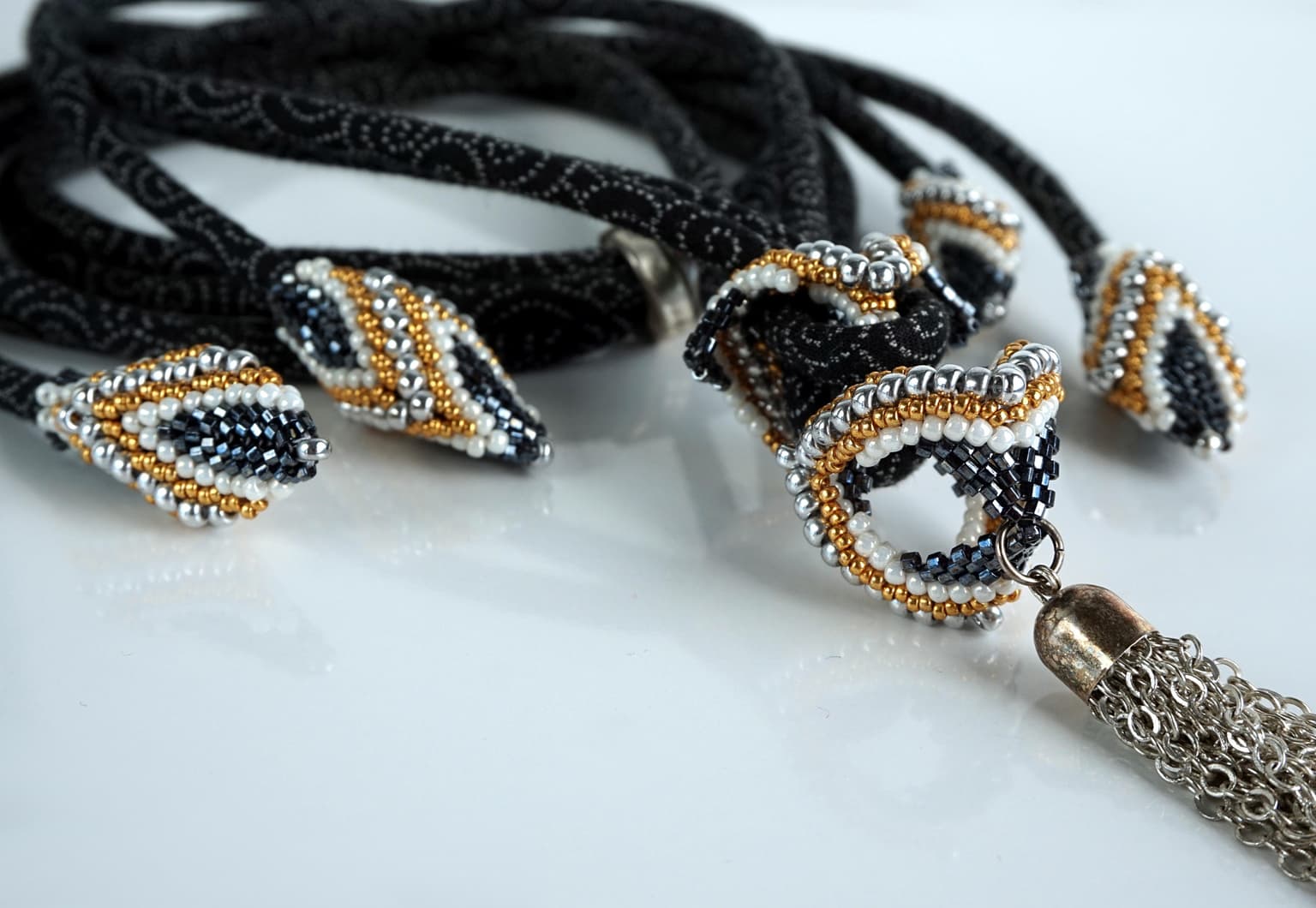
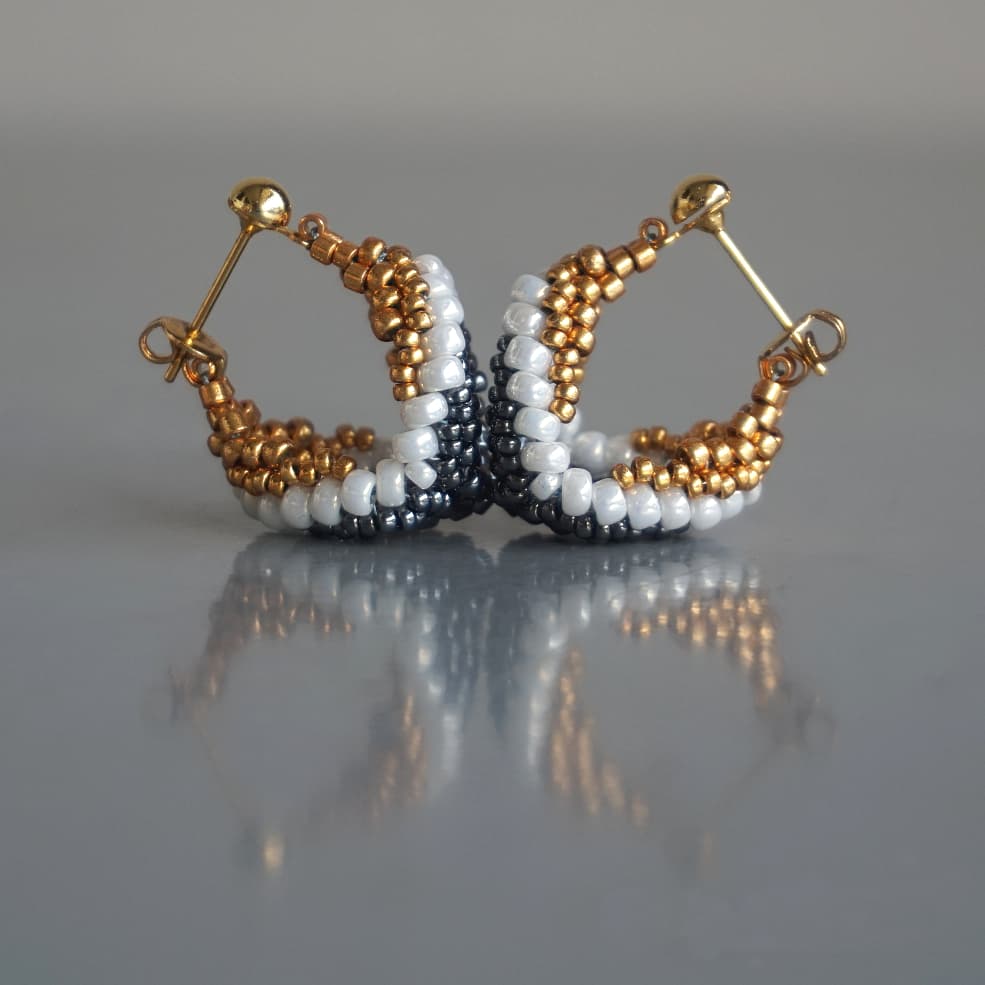
About the look
Chirimania
Beads
2018
Open Hearts
Beads
2018
Open Hearts earrings
Beads
2018